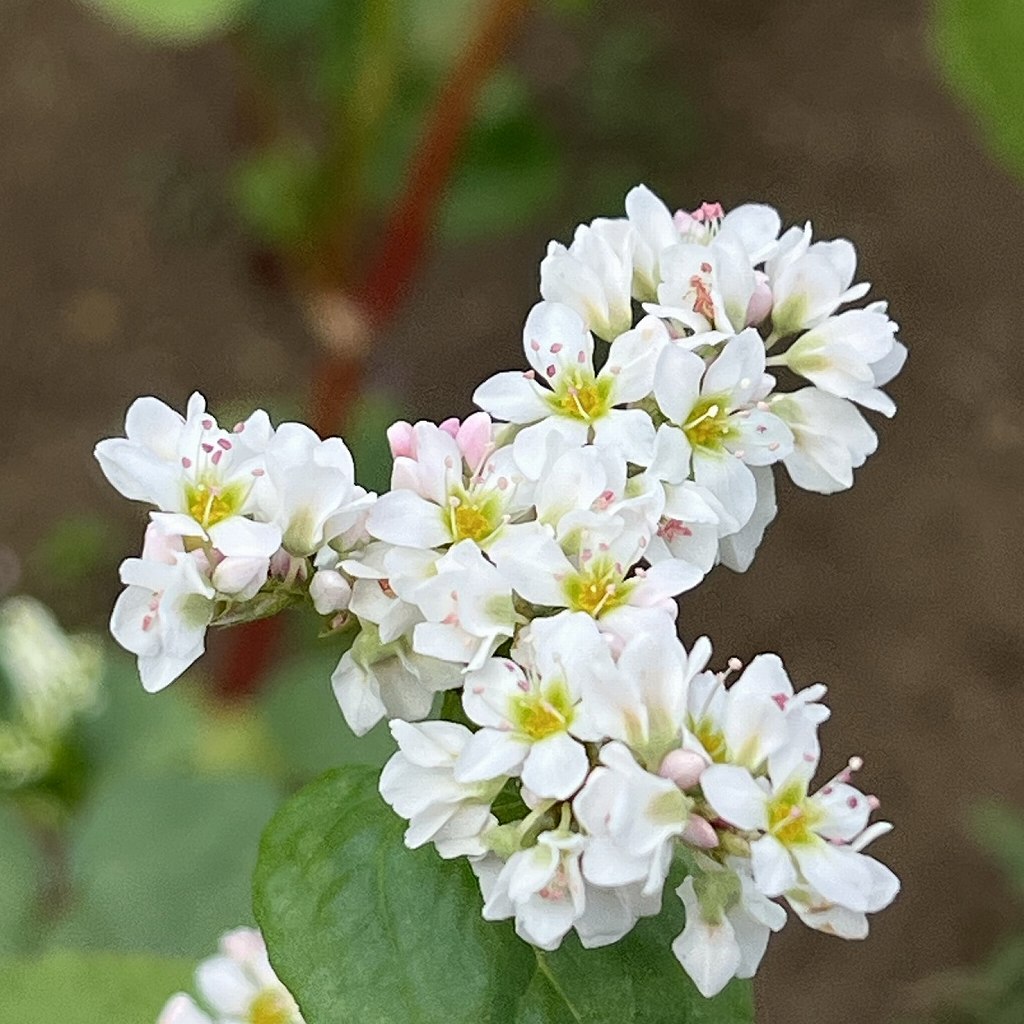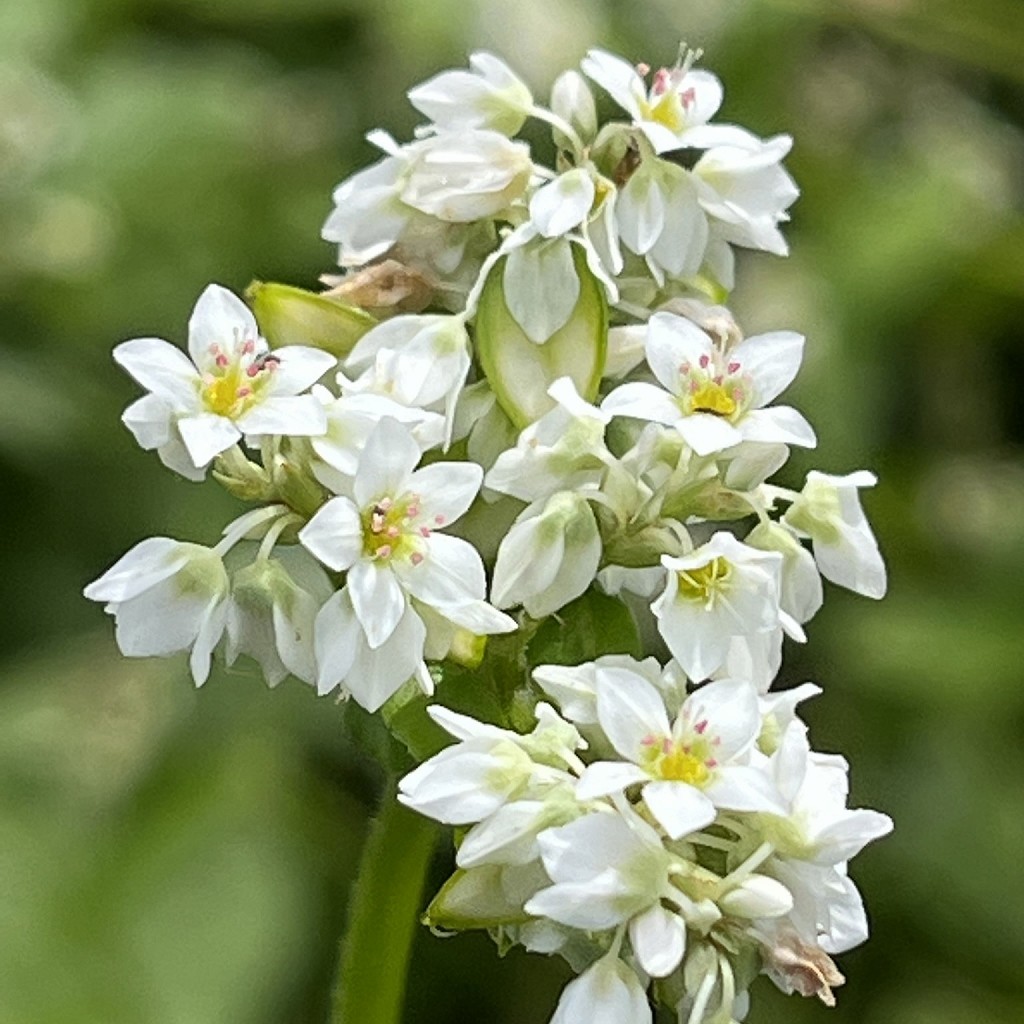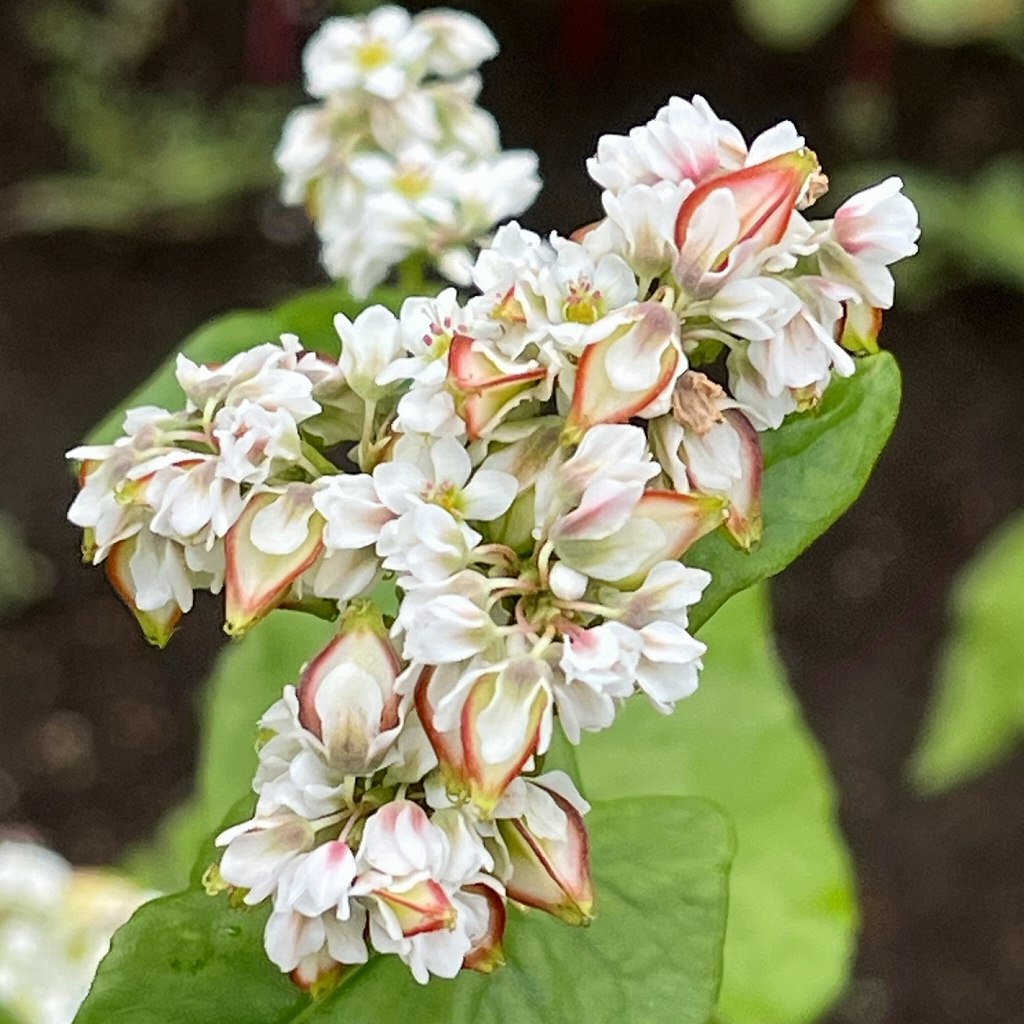ソバは茎の先に小花が集まって咲きます。花弁のように見える萼片が5枚、雄しべが8本、雌しべが3裂。花柱の長い花と短い花があります。
Buckwheat blooms with small flowers gathered at the tip of the stem. The flower has 5 petal-like sepals, 8 stamens, and 3 lobed pistils. There are long and short style flowers.
【仮名】ソバ
【和名】蕎麦
【英名】Buckwheat
【学名】Fagopyrum esculentum
【誕生】09/ 11, 09/ 24, 11/ 01, 11/ 03
【開花】06, 07, 08, 09月
【花色】White, Pink, Red




ソバ
ソバの概要
ソバはタデ科の1年草です。原産地は中国雲南省~ヒマラヤ地方で、日本へは縄文時代以前に渡来。寒冷な気候で用水に乏しく、地味が痩せているところでも育つ穀物として世界中に栽培が広がりました。花言葉は「真心」「誠実」「懐かしい想い出」など。俳句では初秋の季語です。
ソバの名前
ソバの名前の由来は、種実に角があるから「稜」、麦の代わりだから「傍」、山で栽培するから「杣」など。稜に因んで英名バックウィートも「山毛欅のような小麦」、ラテン語の属名ファゴフィーラムも「山毛欅のような穀物」です。種小名エスキュレンタムは「食用」という意味。
ソバの姿形
ソバの根は深く伸び、茎は上方で分枝し、葉は先の尖ったハート形で互生。花は小さく、茎先に集まって咲きます。小花は花弁のように見える萼片が5枚、雄しべが8本、雌しべが3裂。花柱の長い花と短い花があり、訪花昆虫が送受粉を担います。花後の痩果は暗褐色の卵形で3稜。
ソバの近縁
ソバの近縁「赤地利蕎麦」は原産地が南~東アジアの多年草。種実は灰汁が強くて食べられませんが、若葉は野菜になり、根茎は解熱や下痢止めに用いられます。「韃靼蕎麦」は原産地が中央アジアの1年草。種実は苦みが強いものの食べられ、健康機能成分のルチンを多く含みます。
ソバの利用
ソバは種実から果皮を除き、茹でてお粥にしたり、粉に挽いて水などを加え、焼いたり、麺などに加工。料理はロシアやウクライナの「カーシャ」、フランスの「ガレット」、イタリアの「ピッツォッケリ」、中国の「ヘイロ」、韓国の「冷麺」、日本の「蕎麦切り」などがあります。
Buckwheat
Overview of Buckwheat
Buckwheat is an annual plant of the Polygonaceae family. The place of origin is from Yunnan Province of China to the Himalayan region, and it was brought to Japan before the Jomon period. Cultivation has spread all over the world as a grain that can be grown even in cold climates where water is scarce and the soil is barren. Flower language is “sincerity” and “nostalgic memories”. In haiku, it is a season word for early autumn.
Name of Buckwheat
Buckwheat’s Japanese name comes from “the seeds have horns”, “substitute for wheat”, and “cultivated in the mountains”. Since the seeds have horns, the English name Buckwheat means “wheat like zelkova”, and the Latin genus name Fagopyrum also means “grain like zelkova”. The species name Esculentum means “edible”.
Shape of Buckwheat
Buckwheat has deep roots, upwardly branched stems, and alternate heart-shaped leaves with pointed tips. The flowers are small and clustered at the tip of the stem. The florets have 5 petal-like sepals, 8 stamens, and 3 cleft pistils. There are long and short style flowers, and flower-visiting insects are responsible for pollination. Achenes after flowers are dark brown, ovate, and three-sided.
Relatives of Buckwheat
“Polygonum cymosum”, a relative of Buckwheat, is a perennial plant native to South and East Asia. The seeds are not edible due to their strong lye, but the young leaves are used as vegetables, and the rhizomes are used to reduce fever and prevent diarrhea. “Fagopyrum tataricum” is an annual herb native to Central Asia. Although the seeds are bitter, they are edible and contain a large amount of rutin, a health-promoting ingredient.
Use of Buckwheat
Buckwheat is used by removing the pericarp from the seeds. You can boil it to make porridge, grind it into powder, add water, bake it, or process it into noodles. Dishes include Russian and Ukrainian “Kasha”, French “Galette”, Italian “Pizzoccheri”, Chinese “Heiro”, Korean “Naengmyeon”, and Japanese “Soba-kiri”.


